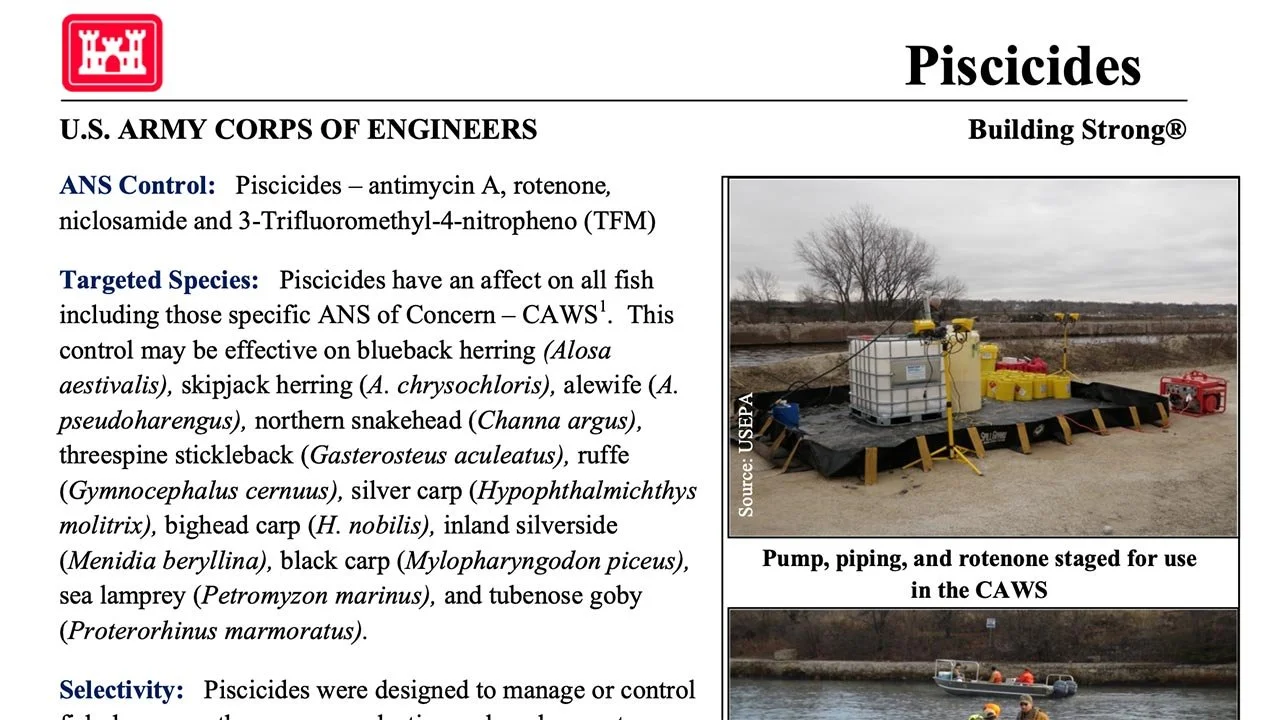Piscicides
Abstract
Publication: U.S. Army Corps of Engineers
This 2013 U.S. Army Corps of Engineers report provides a concise yet detailed overview of the use of piscicides—specifically antimycin A, rotenone, niclosamide, and TFM—for the control and management of invasive aquatic species. It focuses on their application in the Chicago Area Waterway System (CAWS) and other aquatic environments. The document outlines how these chemicals work, their target species (including Asian carp and sea lamprey), their relative toxicity, environmental impact, and effectiveness under varying conditions.
Antimycin A and rotenone are highlighted as general-use piscicides, with antimycin noted for its higher toxicity to scaled fish and quicker degradation in warm, alkaline water. The report also discusses selectivity issues, noting that piscicides are generally non-selective and can impact non-target species such as macroinvertebrates and amphibians.
The manual covers regulatory considerations, application protocols, environmental monitoring, oral delivery system development for targeted species, and challenges related to disposal of dead fish. It references numerous studies, including those evaluating sensitivity of carp to piscicides, and provides historical context for piscicide use in U.S. and international waters.
This publication serves as a technical reference for agencies involved in aquatic invasive species control, especially in large-scale management or restoration projects.

